On this page you can find short personal information on our conference and workshop chairs and the invited speakers (in alphabetical order).
Herbert Edelsbrunner
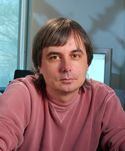 Herbert Edelsbrunner was born 1958 near Graz, Austria. In 1982 he graduated from the Graz University of Technology with a Ph. D. in Technical Mathematics. He was faculty in Computer Science at the Graz University of Technology and the University of Illinois at Urbana-Champaign and is now Arts and Sciences Professor of Computer Science and Mathematics at Duke University. In 1996 he co-founded Geomagic, a software company in the area of Digital Shape Sampling and Processing, and serves on its Board of Directors. His research areas are algorithms, geometry, topology, and biology. He has published two textbooks in the general area of computational geometry and topology. In 1991, he received the Alan T. Waterman Award from the National Science Foundation, in 2005 he was elected member of the American Academy of Arts and Sciences, and in 2006 he received an honorary Ph. D. from the Graz University of Technology.
Herbert Edelsbrunner was born 1958 near Graz, Austria. In 1982 he graduated from the Graz University of Technology with a Ph. D. in Technical Mathematics. He was faculty in Computer Science at the Graz University of Technology and the University of Illinois at Urbana-Champaign and is now Arts and Sciences Professor of Computer Science and Mathematics at Duke University. In 1996 he co-founded Geomagic, a software company in the area of Digital Shape Sampling and Processing, and serves on its Board of Directors. His research areas are algorithms, geometry, topology, and biology. He has published two textbooks in the general area of computational geometry and topology. In 1991, he received the Alan T. Waterman Award from the National Science Foundation, in 2005 he was elected member of the American Academy of Arts and Sciences, and in 2006 he received an honorary Ph. D. from the Graz University of Technology.
Marc Ernst
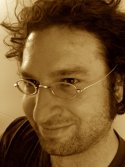 Marc Ernst is leader of the Junior Research Group "Multisensory Perception and Action" at the Max Planck Institute for Biological Cybernetics in Tübingen, Germany. The group is interested in human multimodal perception and sensorimotor integration. Methodologically, the group of Marc Ernst mainly uses quantitative psychophysical and neuropsychological methods together with Virtual Reality techniques and Bayesian models of sensory perception. Marc Ernst studied Physics in Heidelberg and Frankfurt/Main. In 2000 he received his Ph.D. at the Max Planck Institute for Biological Cybernetics for investigations on the human visuomotor behavior. For this work he was awarded the Attempto-Prize (2000) from the University of Tübingen and the Otto-Hahn-Medaille (2001) from the Max-Planck-Society. Starting in 2000 he spent almost 2 years as a postdoc at the University of California, Berkeley working with Prof. Martin Banks on psychophysical experiments and computational models investigating the integration of visual-haptic information. End of 2001 he returned to the Max Planck Institute. Marc Ernst is the principle investigator of several international grants including the two European Projects ImmerSence and CyberWalk.
Marc Ernst is leader of the Junior Research Group "Multisensory Perception and Action" at the Max Planck Institute for Biological Cybernetics in Tübingen, Germany. The group is interested in human multimodal perception and sensorimotor integration. Methodologically, the group of Marc Ernst mainly uses quantitative psychophysical and neuropsychological methods together with Virtual Reality techniques and Bayesian models of sensory perception. Marc Ernst studied Physics in Heidelberg and Frankfurt/Main. In 2000 he received his Ph.D. at the Max Planck Institute for Biological Cybernetics for investigations on the human visuomotor behavior. For this work he was awarded the Attempto-Prize (2000) from the University of Tübingen and the Otto-Hahn-Medaille (2001) from the Max-Planck-Society. Starting in 2000 he spent almost 2 years as a postdoc at the University of California, Berkeley working with Prof. Martin Banks on psychophysical experiments and computational models investigating the integration of visual-haptic information. End of 2001 he returned to the Max Planck Institute. Marc Ernst is the principle investigator of several international grants including the two European Projects ImmerSence and CyberWalk.
Bernd Hamann
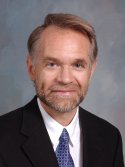 Bernd Hamann serves as an Associate Vice Chancellor for Research at the University of California, Davis, where he is also a professor of computer science. His main interests are visualization, geometric modeling, and computer graphics. Bernd Hamann received his Ph.D. degree in computer science from Arizona State University in 1991. He was awarded a 1992 National Science Foundation Research Initiation Award, a 1996 National Science Foundation CAREER Award, and a 2006 University of California Presidential Chair in Undergraduate Eduction.
Bernd Hamann serves as an Associate Vice Chancellor for Research at the University of California, Davis, where he is also a professor of computer science. His main interests are visualization, geometric modeling, and computer graphics. Bernd Hamann received his Ph.D. degree in computer science from Arizona State University in 1991. He was awarded a 1992 National Science Foundation Research Initiation Award, a 1996 National Science Foundation CAREER Award, and a 2006 University of California Presidential Chair in Undergraduate Eduction.
Tosiyasu L. Kunii
 Tosiyasu L. Kunii is currently Professor and IT Institute Director at Kanazawa Institute of Technology, and Professor Emeritus of the University of Tokyo, and of the University of Aizu. He served as the Founding President and Professor of the University of Aizu dedicated to computer science and engineering as a discipline, from 1993 to 1997, Professor of Department of Computer and Information Science at the University of Tokyo from 1978 to 1993, and Visiting Professors at University of California at Berkeley in 1994. He received D.Sc. in 1967 from the University of Tokyo. He received the 1998 Taylor L. Booth Education Award the highest education award of IEEE Computer Society given to one individual a year. He is Life Fellow of IEEE and Fellow of IPSJ. He has published 50 books and 400 refereed papers in computer science. Dr. Kunii was Founder and Editor-in-Chief of The Visual Computer (1984-1999), and International Journal of Shape Modeling (1994-1995), and was Associate Editor of IEEE Computer Graphics and Applications (1982-2002). He is Associate Editor-in-Chief of The Journal of Computer Animation and Virtual Worlds (John Wiley & Sons) (1990-) and on the Editorial Board of Information Systems Journal (1976-), and Information Sciences Journal(1983-).
Tosiyasu L. Kunii is currently Professor and IT Institute Director at Kanazawa Institute of Technology, and Professor Emeritus of the University of Tokyo, and of the University of Aizu. He served as the Founding President and Professor of the University of Aizu dedicated to computer science and engineering as a discipline, from 1993 to 1997, Professor of Department of Computer and Information Science at the University of Tokyo from 1978 to 1993, and Visiting Professors at University of California at Berkeley in 1994. He received D.Sc. in 1967 from the University of Tokyo. He received the 1998 Taylor L. Booth Education Award the highest education award of IEEE Computer Society given to one individual a year. He is Life Fellow of IEEE and Fellow of IPSJ. He has published 50 books and 400 refereed papers in computer science. Dr. Kunii was Founder and Editor-in-Chief of The Visual Computer (1984-1999), and International Journal of Shape Modeling (1994-1995), and was Associate Editor of IEEE Computer Graphics and Applications (1982-2002). He is Associate Editor-in-Chief of The Journal of Computer Animation and Virtual Worlds (John Wiley & Sons) (1990-) and on the Editorial Board of Information Systems Journal (1976-), and Information Sciences Journal(1983-).
Hendrik Lensch
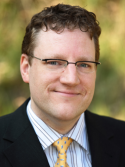 Hendrik P. A. Lensch is the head of the independent research group "General Appearance Acquisition and Computational Photography" at the Max-Planck-Institut für Informatik in Saarbrücken, Germany. He received his diploma in computer science from the University of Erlangen in 1999, worked as a research associate in the computer graphics group at the MPI Informatik and received his PhD from Saarland University in 2003. In 2005 and 2006, he joint the faculty of Stanford University, USA as a visiting assistant professor. For his work on capturing and representing reflection properties he received the Eurographics Young Researcher Award 2005. He was awarded a fellowship by the Max Planck Center for Visual Computing and Communication (Saarbrücken / Stanford) and recently received an Emmy Noether fellowship from the German Research Foundation (DFG). His research interests include 3D appearance acquisition, image-based rendering and computational photography.
Hendrik P. A. Lensch is the head of the independent research group "General Appearance Acquisition and Computational Photography" at the Max-Planck-Institut für Informatik in Saarbrücken, Germany. He received his diploma in computer science from the University of Erlangen in 1999, worked as a research associate in the computer graphics group at the MPI Informatik and received his PhD from Saarland University in 2003. In 2005 and 2006, he joint the faculty of Stanford University, USA as a visiting assistant professor. For his work on capturing and representing reflection properties he received the Eurographics Young Researcher Award 2005. He was awarded a fellowship by the Max Planck Center for Visual Computing and Communication (Saarbrücken / Stanford) and recently received an Emmy Noether fellowship from the German Research Foundation (DFG). His research interests include 3D appearance acquisition, image-based rendering and computational photography.
Nadja Magnenat-Thalmann
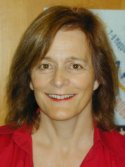 Nadia Magnenat-Thalmann has pioneered research into virtual humans over the last 25 years. She obtained several Bachelor's and Master's degrees in various disciplines (Psychology, Biology and Chemistry) and a PhD in Quantum Physics from the University of Geneva. From 1977 to 1989, she was Professor at the University of Montreal where she founded the MIRALab. She was elected Woman of the Year in the Grand Montreal for her pionnering work on virtual humans and her work was presented at the Modern Art Museum of New York in 1988.
Nadia Magnenat-Thalmann has pioneered research into virtual humans over the last 25 years. She obtained several Bachelor's and Master's degrees in various disciplines (Psychology, Biology and Chemistry) and a PhD in Quantum Physics from the University of Geneva. From 1977 to 1989, she was Professor at the University of Montreal where she founded the MIRALab. She was elected Woman of the Year in the Grand Montreal for her pionnering work on virtual humans and her work was presented at the Modern Art Museum of New York in 1988.
She moved to the University of Geneva in 1989, where she recreated MIRALab, an internationally interdisciplinary lab with about 30 researchers. She has received several scientific and artistic awards for her work, mainly on the Virtual Marylin and the film RENDEZ-VOUS A MONTREAL. In 1997, she has been elected to the Swiss Academy of Technical Sciences and has been nominated as a Swiss personality who has contributed to the advance of science in the 150 years history CD-ROM produced by the Swiss Confederation Parliament. She is editor-in-chief of the Visual Computer Journal (Springer Verlag). She has been invited to participate to the WORLD ECONOMIC FORUM in DAVOS to give several talks and seminars.
Nicholas M. Patrikalakis
 Dr. Nicholas M. Patrikalakis is the Kawasaki Professor of Engineering and Associate Head of the Department of Mechanical Engineering at MIT. His current research interests include: computer-aided design, geometric modeling, robotics and distributed information systems for multidisciplinary data-driven forecasting. He is a member of ACM, ASME, CGS, IEEE, ISOPE, SIAM, SNAME and TCG, and he is editor, co-editor, or member of the editorial board of six international journals (CAD, JCISE, IJSM, TVC, GMOD, IJAMM). He has served as program chair of CGI '91, program co-chair of CGI '98, Pacific Graphics '98, ACM Solid Modeling Symposium 2002, co-chair of the ACM Solid Modeling Symposium 2004, and Chair of the 2005 Convention on Shapes and Solids (ACM SPM'05 and SMI'05).
Dr. Nicholas M. Patrikalakis is the Kawasaki Professor of Engineering and Associate Head of the Department of Mechanical Engineering at MIT. His current research interests include: computer-aided design, geometric modeling, robotics and distributed information systems for multidisciplinary data-driven forecasting. He is a member of ACM, ASME, CGS, IEEE, ISOPE, SIAM, SNAME and TCG, and he is editor, co-editor, or member of the editorial board of six international journals (CAD, JCISE, IJSM, TVC, GMOD, IJAMM). He has served as program chair of CGI '91, program co-chair of CGI '98, Pacific Graphics '98, ACM Solid Modeling Symposium 2002, co-chair of the ACM Solid Modeling Symposium 2004, and Chair of the 2005 Convention on Shapes and Solids (ACM SPM'05 and SMI'05).
Seah Hock Soon
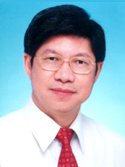 Dr. Seah Hock Soon is an Associate Professor and Dean of the School of Computer Engineering at Nanyang Technological University (NTU), Singapore. Seah serves on the Editorial Board of the Computer & Graphics Journal, published by Elsevier. Seah is the Founding President of both the ACM SIGGRAPH Singapore and the South East Asian Computer Graphics Society (SEAGRAPH). He is also the Leader of Digital Media Virtual Grid Community under the Singapore National Grid Office. He is a member of the Executive Board of Directors of the Centre for Advanced Media Technology (CAMTech), a joint R&D centre set up in 1998 by NTU and the German Fraunhofer Institute for Computer Graphics (IGD). His current research interests are in image sequence analysis with applications to digital film effects and automatic in-between frame generation for cel animation, and advanced medical visualisation. He holds a Bachelor degree in Electrical Engineering, a Master's degree in Computing Science, and a PhD in Computer Graphics. Seah is on the Steering Committee of the International Conferences on Cyberworlds. He was a General Chair of CW2003 and CW2005.
Dr. Seah Hock Soon is an Associate Professor and Dean of the School of Computer Engineering at Nanyang Technological University (NTU), Singapore. Seah serves on the Editorial Board of the Computer & Graphics Journal, published by Elsevier. Seah is the Founding President of both the ACM SIGGRAPH Singapore and the South East Asian Computer Graphics Society (SEAGRAPH). He is also the Leader of Digital Media Virtual Grid Community under the Singapore National Grid Office. He is a member of the Executive Board of Directors of the Centre for Advanced Media Technology (CAMTech), a joint R&D centre set up in 1998 by NTU and the German Fraunhofer Institute for Computer Graphics (IGD). His current research interests are in image sequence analysis with applications to digital film effects and automatic in-between frame generation for cel animation, and advanced medical visualisation. He holds a Bachelor degree in Electrical Engineering, a Master's degree in Computing Science, and a PhD in Computer Graphics. Seah is on the Steering Committee of the International Conferences on Cyberworlds. He was a General Chair of CW2003 and CW2005.
Alexei Sourin
 Dr. Alexei Sourin is an Associate Professor with the School of Computer Engineering at Nanyang Technological University (NTU) in Singapore. His research interests are in function-based shape modeling, shared virtual environments, web visualization, visualization on the Grid, cybermedicine, scientific visualization, and cyber-learning. Dr. Sourin received his M.Eng. and Ph.D. degrees in the area of computer graphics from the department of Computer Systems and Technologies at the Moscow Engineering Physics Institute (MEPhI) in 1983 and 1988, respectively. From 1983 to 1993 he was a researcher at MEPhI. Since 1993 he held faculty positions at NTU. He is also a deputy director of the NTU's Centre for Financial Engineering. He is one of the pioneers of electronic education in Singapore. Dr. Sourin is a Senior Member of IEEE and a member of ACM SIGGRAPH. He is a member of the Steering Committee of the International Conferences on Cyberworlds. He has served as program chair of CW2003, CW2004 and CW2005 and general co-chair of CW2006. He is on the editorial board of three international journals: Journal of Ubiquitous Computing and Intelligence, Transactions on Computational Science, and Computer Graphics & Geometry.
Dr. Alexei Sourin is an Associate Professor with the School of Computer Engineering at Nanyang Technological University (NTU) in Singapore. His research interests are in function-based shape modeling, shared virtual environments, web visualization, visualization on the Grid, cybermedicine, scientific visualization, and cyber-learning. Dr. Sourin received his M.Eng. and Ph.D. degrees in the area of computer graphics from the department of Computer Systems and Technologies at the Moscow Engineering Physics Institute (MEPhI) in 1983 and 1988, respectively. From 1983 to 1993 he was a researcher at MEPhI. Since 1993 he held faculty positions at NTU. He is also a deputy director of the NTU's Centre for Financial Engineering. He is one of the pioneers of electronic education in Singapore. Dr. Sourin is a Senior Member of IEEE and a member of ACM SIGGRAPH. He is a member of the Steering Committee of the International Conferences on Cyberworlds. He has served as program chair of CW2003, CW2004 and CW2005 and general co-chair of CW2006. He is on the editorial board of three international journals: Journal of Ubiquitous Computing and Intelligence, Transactions on Computational Science, and Computer Graphics & Geometry.
Franz-Erich Wolter
 Dr. F.-E. Wolter has been a full professor of computer science at the Leibniz Universität Hannover (LUH) since the winter term of 1994/1995, where he heads the Institute of Man-Machine-Communication and directs the Division of Computer Graphics and Geometric Modeling called Welfenlab. Before coming to Hannover, Dr. Wolter held faculty positions at the University of Hamburg (in 1994), MIT (1989-1993) and Purdue University (1987-1989). Prior to this he developed industrial expertise as a software and development engineer with AEG in Germany (1986-1987). Dr. Wolter obtained his PhD in 1985 from the department of mathematics at the Technical University of Berlin in the area of Riemannian manifolds. In 1980 he graduated in mathematics and theoretical physics from the Free University of Berlin. At MIT Dr. Wolter codeveloped the geometric modeling system Praxiteles for the US Navy. Since then he has been publishing various papers that broke new ground applying concepts from differential geometry and topology on problems and design of new methods used in geometric modeling and CAD systems. The aforementioned topics include image and shape classification as well as virtual reality. Especially haptic perception has been subjetc of his research in Hannover. Dr. Wolter is a research affiliate of MIT.
Dr. F.-E. Wolter has been a full professor of computer science at the Leibniz Universität Hannover (LUH) since the winter term of 1994/1995, where he heads the Institute of Man-Machine-Communication and directs the Division of Computer Graphics and Geometric Modeling called Welfenlab. Before coming to Hannover, Dr. Wolter held faculty positions at the University of Hamburg (in 1994), MIT (1989-1993) and Purdue University (1987-1989). Prior to this he developed industrial expertise as a software and development engineer with AEG in Germany (1986-1987). Dr. Wolter obtained his PhD in 1985 from the department of mathematics at the Technical University of Berlin in the area of Riemannian manifolds. In 1980 he graduated in mathematics and theoretical physics from the Free University of Berlin. At MIT Dr. Wolter codeveloped the geometric modeling system Praxiteles for the US Navy. Since then he has been publishing various papers that broke new ground applying concepts from differential geometry and topology on problems and design of new methods used in geometric modeling and CAD systems. The aforementioned topics include image and shape classification as well as virtual reality. Especially haptic perception has been subjetc of his research in Hannover. Dr. Wolter is a research affiliate of MIT.
